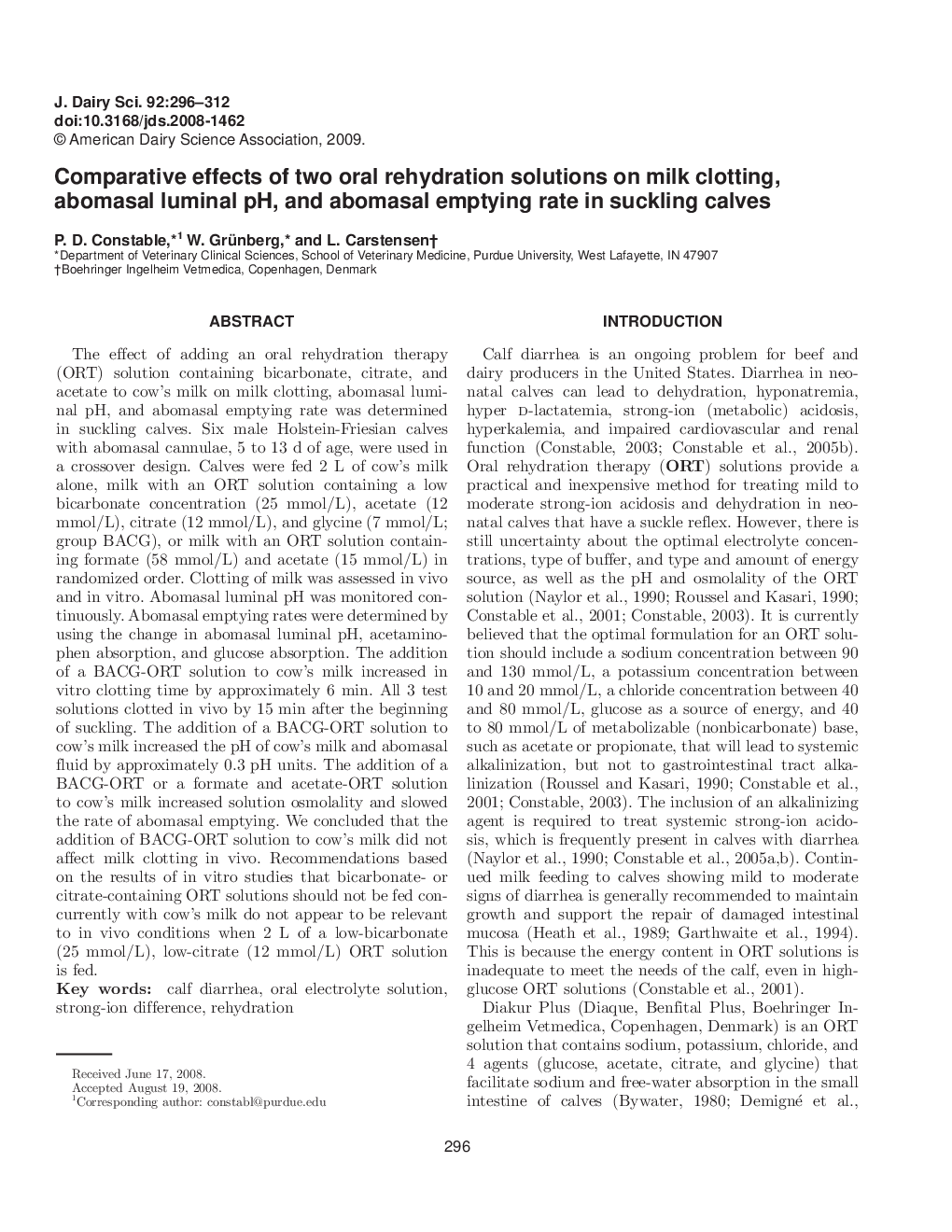| Article ID | Journal | Published Year | Pages | File Type |
|---|---|---|---|---|
| 2440104 | Journal of Dairy Science | 2009 | 17 Pages |
Abstract
The effect of adding an oral rehydration therapy (ORT) solution containing bicarbonate, citrate, and acetate to cow's milk on milk clotting, abomasal luminal pH, and abomasal emptying rate was determined in suckling calves. Six male Holstein-Friesian calves with abomasal cannulae, 5 to 13 d of age, were used in a crossover design. Calves were fed 2Â L of cow's milk alone, milk with an ORT solution containing a low bicarbonate concentration (25Â mmol/L), acetate (12Â mmol/L), citrate (12Â mmol/L), and glycine (7Â mmol/L; group BACG), or milk with an ORT solution containing formate (58Â mmol/L) and acetate (15Â mmol/L) in randomized order. Clotting of milk was assessed in vivo and in vitro. Abomasal luminal pH was monitored continuously. Abomasal emptying rates were determined by using the change in abomasal luminal pH, acetaminophen absorption, and glucose absorption. The addition of a BACG-ORT solution to cow's milk increased in vitro clotting time by approximately 6Â min. All 3 test solutions clotted in vivo by 15Â min after the beginning of suckling. The addition of a BACG-ORT solution to cow's milk increased the pH of cow's milk and abomasal fluid by approximately 0.3 pH units. The addition of a BACG-ORT or a formate and acetate-ORT solution to cow's milk increased solution osmolality and slowed the rate of abomasal emptying. We concluded that the addition of BACG-ORT solution to cow's milk did not affect milk clotting in vivo. Recommendations based on the results of in vitro studies that bicarbonate- or citrate-containing ORT solutions should not be fed concurrently with cow's milk do not appear to be relevant to in vivo conditions when 2Â L of a low-bicarbonate (25Â mmol/L), low-citrate (12Â mmol/L) ORT solution is fed.
Keywords
Related Topics
Life Sciences
Agricultural and Biological Sciences
Animal Science and Zoology
Authors
P.D. Constable, W. Grünberg, L. Carstensen,
